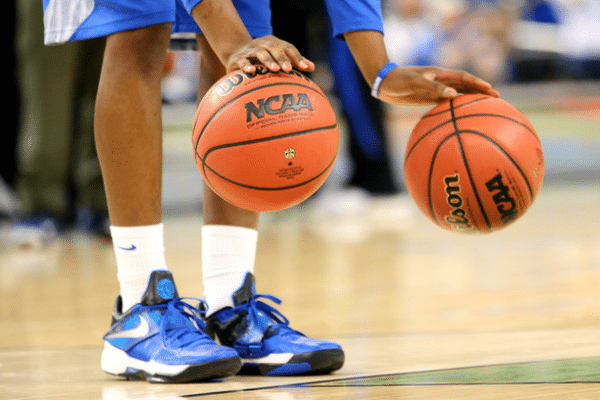
Balancing Offense and Defense in Practice Planning: Getting the Most Out of Your Practices
Effective practice planning is crucial for developing a well-rounded basketball team capable of excelling on both offense and defense. Balancing offensive and defensive drills in practice ensures that players are equipped with the skills and strategies needed to succeed in all aspects of the game.
A thoughtful approach to practice planning not only enhances individual skills but also improves team cohesion, communication, and overall performance during games.
This article explores strategies for creating a balanced practice plan that maximizes both offensive and defensive development.

1. Set Clear Objectives
Establishing clear objectives for each practice helps guide the focus on both offense and defense.
Define Goals
Determine specific goals for both offensive and defensive aspects of practice. For example, you might focus on improving shooting accuracy and defensive rotations in a single session. Establishing specific, measurable goals will give your practice structure and direction.
Prioritize Needs
Assess your team’s strengths and weaknesses to prioritize which areas need more attention. If your team struggles with ball handling, allocate more time to dribbling drills. Conversely, if defensive rotations are an issue, spend more time on defensive drills. Adjust your practice plan based on these needs to ensure balanced development.
2. Design a Structured Practice Plan
A well-structured practice plan ensures that both offensive and defensive drills are included.
Divide Practice Time
Allocate specific time blocks for offensive and defensive drills. For example, you might spend 30 minutes on offense and 30 minutes on defense in a 90-minute practice. This ensures that neither side of the game is neglected and players can develop skills in both areas.
Include Warm-Ups
Begin with warm-up drills that prepare players for both offensive and defensive work. Incorporate exercises that enhance agility, coordination, and conditioning. A solid warm-up sets a positive tone for the rest of the practice and reduces the risk of injury.
3. Incorporate Game Situations
Integrating game situations helps players apply offensive and defensive skills in realistic scenarios.
Simulate Game Scenarios
Use drills that replicate game situations, such as end-of-game scenarios, transition play, and fast breaks. This allows players to practice both offensive and defensive strategies in context, increasing their understanding of when to apply specific skills.
Run Scrimmages
Conduct regular scrimmages that emphasize both offense and defense. Scrimmages provide opportunities for players to implement strategies and make adjustments based on their performance. Consider setting specific goals for each scrimmage, such as maintaining a certain defensive efficiency or achieving a particular number of successful offensive plays.

4. Balance Skill Development
Ensure that practice includes a balance of skill development for both offense and defense.
Offensive Skill Drills
Focus on drills that enhance shooting, dribbling, passing, and spacing. For example, practice shooting drills, pick-and-roll scenarios, and fast breaks. Ensure that players understand the importance of these skills and how they contribute to the overall offensive strategy.
Defensive Skill Drills
Include drills that improve defensive positioning, footwork, and communication. Work on defensive slides, help defense, and closing out on shooters. Emphasize the importance of anticipation and reading the offensive players to strengthen your defense.
5. Use Mixed Drills
Mixed drills integrate both offensive and defensive elements into a single drill, promoting balance.
Offense vs. Defense Drills
Create drills where players alternate between offensive and defensive roles. For instance, practice 3-on-2 and 2-on-3 drills to work on both scoring and defending. This helps players understand the fluid nature of basketball, where they may switch roles multiple times during a possession.
Transition Drills
Incorporate drills that emphasize transitioning from offense to defense and vice versa. This helps players develop the ability to quickly switch between roles during games. A drill could involve players sprinting back to defend immediately after a shot is taken.

6. Focus on Communication
Effective communication is vital for successful execution of both offensive and defensive strategies.
Emphasize Verbal Communication
Encourage players to communicate clearly during drills and scrimmages. Use drills that require players to call out screens, switches, and defensive assignments. Communication reduces confusion and helps players understand their responsibilities.
Develop Non-Verbal Signals
Implement non-verbal signals for situations like defensive switches and offensive plays. This helps players understand each other’s actions without needing constant verbal cues, which is especially useful in a noisy game environment.
7. Assess and Adjust
Regular assessment and adjustment ensure that practice remains balanced and effective.
Evaluate Performance
Continuously evaluate how well your team is performing in both offensive and defensive drills. Look for areas where players excel or struggle, and adjust practice plans accordingly. This allows you to focus on areas needing improvement and ensures efficient use of practice time.
Solicit Feedback
Gather feedback from players on the effectiveness of practice drills. Use this feedback to make improvements and ensure that practice meets the needs of the team. Players often have valuable insights based on their experiences, which can lead to more effective practices.

8. Promote Team Concepts
Ensure that practice emphasizes team concepts for both offense and defense.
Offensive Concepts
Teach concepts such as spacing, ball movement, and player roles within offensive plays. Work on how players read defenses and make decisions based on defensive schemes. Reinforcing these concepts helps players become more effective in executing plays.
Defensive Concepts
Focus on concepts like defensive positioning, team defense principles, and defensive rotations. Ensure that players understand how to work together to prevent scoring opportunities. This teamwork is crucial for a successful defense, as it requires coordination and communication among all players.
9. Include Conditioning
Conditioning is an integral part of balancing offense and defense in practice.
Incorporate Conditioning Drills
Include conditioning drills that simulate game conditions, such as full-court sprints, defensive slides, and agility drills. Ensure that players are prepared to perform well throughout the game. Effective conditioning enhances players’ endurance and stamina, crucial for executing both offensive and defensive strategies.
Monitor Player Fatigue
Be mindful of players’ fatigue levels during practice. Balance high-intensity drills with lower-intensity activities to prevent overtraining and ensure optimal performance. Adjust practice intensity based on how players are responding physically.
10. Maintain Flexibility
Maintain flexibility in your practice plan to address evolving team needs and challenges.
Adapt to Changes
Be prepared to adjust your practice plan based on game performance, injuries, or changes in team dynamics. Flexibility helps ensure that practice remains relevant and effective. If your team struggles with a specific defensive strategy, incorporate more drills focused on that aspect.
Innovate
Regularly introduce new drills and activities to keep practice engaging and effective. Innovation helps maintain players’ interest and enthusiasm while addressing both offensive and defensive skills. Experiment with different practice formats or incorporate fun challenges to mix up routines.
Balancing Offense and Defense in Practice Planning Conclusion:
Balancing offense and defense in practice planning is essential for developing a well-rounded basketball team. By setting clear objectives, designing a structured practice plan, incorporating game situations, balancing skill development, and using mixed drills, you can create effective practices that address both offensive and defensive needs.
Focus on communication, assess performance, promote team concepts, include conditioning, and maintain flexibility to optimize practice effectiveness and improve overall team performance.



